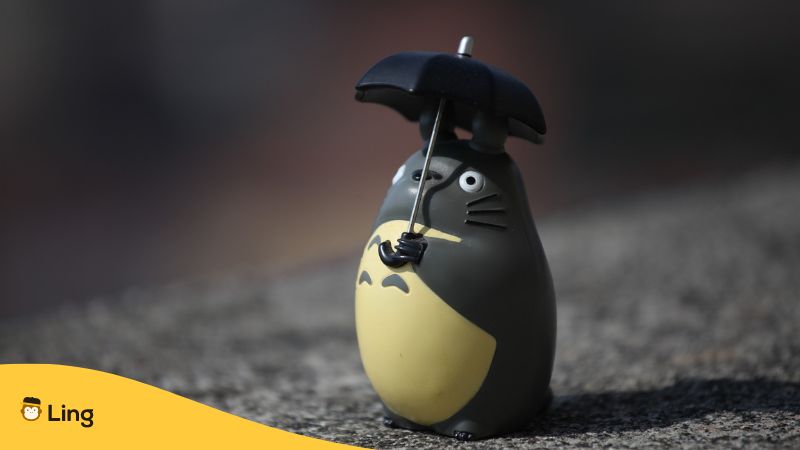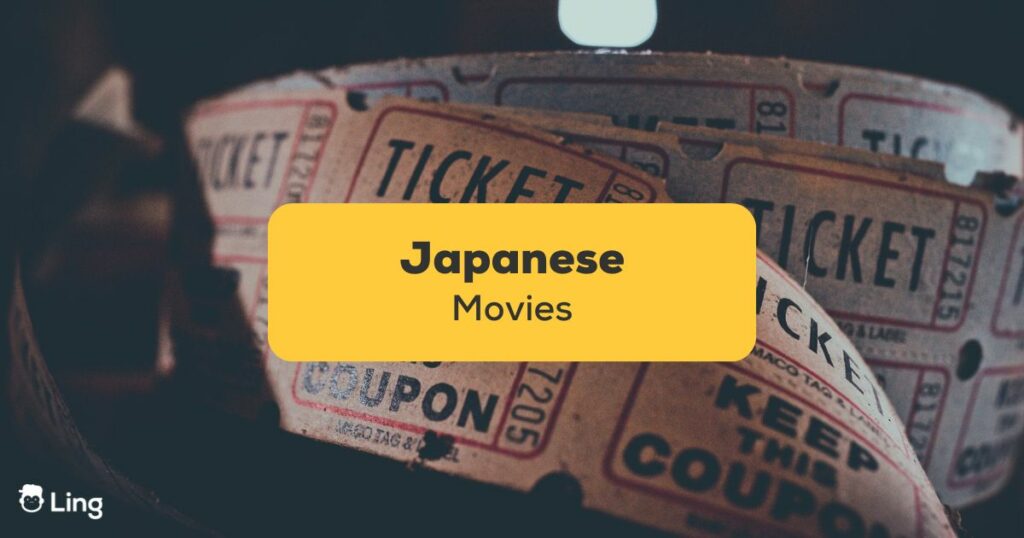If you’re a cinephile, then you know just how amazing Japanese movies are. From live-action dramas to vibrant animation worlds, there’s a wide selection of Japanese movies for you to sink your teeth into. Japanese films provide a window into Japan’s cinematic culture, which is super diverse. Grab your popcorn buckets and take a front-row seat to enjoy this time travel with Japanese movies!
Table Of Contents
Japanese Movies: The Early Years
Let’s take a trip down memory lane into Japanese cinema. Japan first began exploring the wonders of the silver screen when the first public film exhibition took place in Bombay, India. The secret world of cinema reached Japan a year later, in 1897, with the help of a local businessman called Inabata Katsutaro, as well as Thomas Edison’s kinetoscope, and the Lumière Brothers’ own Cinematograph, which projected the films.
The Silent Era – 1890s-1920s
Spooky ghost films were among the first to come out of Japan with Shirō Asano’s Jizo the Spook (Bake Jizo, 化け地蔵, 1898) and Resurrection of a Corpse (Shinin no sosei, 死体の復活, 1898). Away from the supernatural, Japan also explored another cinematic avenue with the first documentary, Geisha no Teodori (芸者の手踊り, 1899) by Tsunekichi Shibata.
In the first Japanese theaters, employees called benshi provided narration for silent films and dramatic readings of musical scores. In the West, the music was often performed live!
The pioneering director of Japanese films is considered to be Shōzō Makino. In 1908, the director kicked off his career with the release of Honnōji gassen (本能寺合戦) and tapped Matsunosuke Onoe, a former kabuki actor, as the lead actor. Because of his role in the film, Onoe became Japan’s first film star and went on to appear in over 1,000 films!
Roll Sound – 1930s
As Western cinema took off and began introducing movies with sound, like the maiden “talkie” from 1927 – The Jazz Singer – Japan was still producing silent films well into the 1930s. Though mostly short films were the first to provide sound, Japan’s first feature-length talkie was “Fujiwara Yoshie no furusato” (Hometown, ふるさと, 1930). Then, in 1935, one of the first Japanese films to earn a theatrical release in the U.S. was Mikio Naruse’s “Wife, be like a rose!” (Tsuma Yo Bara No Yoni). Japanese cinema was on a roll!

WWII And The Government – 1940s
The 1940s saw a weak economy and large-scale unemployment due to World War II. This effect trickled into Japanese cinema, with the Japanese government seeking to capitalize on Japan’s growing influence through propaganda films that displayed the mighty invincibility of the Empire of Japan. Many films produced around this time did just that by emphasizing patriotic and militaristic themes, like 1942’s “The War at Sea from Hawaii to Malay” (Hawai Mare oki kaisen) by director Kajiro Yamamoto, which depicted the attack on Pearl Harbor.
The 1940s brought the emergence of the infamous Japanese director Akira Kurosawa. His feature film debut in 1943, Sugata Sanshiro, made a splash that would eventually cannonball into an unforgettable career and filmography beloved by Japanese people and cinephiles worldwide.
The Golden Age – 1950s
Oh, the 1950s. This is where the magic happens. Movie magic, that is! This decade is home to some of the most iconic films of Japan: Yasujirō Ozu’s Tokyo Story (東京物語, 1953); Ishirō Honda’s “Godzilla” (ゴジラ, 1954); and Akira Kurosawa’s “Seven Samurai” (七人の侍, 1954) – the latter being considered one of the best samurai films ever set in feudal Japan!
This decade started impressively with Akira Kurosawa’s “Rashōmon” (羅生門, 1950) winning the Academy Award for Best Foreign Language Film and Venice Film Festival’s Golden Lion Award, both of which are incredibly prestigious and opened the door for Japanese cinema to step onto a grand stage worldwide.
Here are some extra fun tidbits about this decade in Japanese movie history. In 1951, Japan’s first colorized film, “Carmen Comes Home,” directed by Keisuke Kinoshita, came out. In 1953, Teinosuke Kinugasa’s Gate of Hell was the first color movie to be released outside of Japan. It went on to nab the 1954 Academy Award for Best Costume Design (for designer Sanzo Wada) and the Palme d’Or at the glitzy Cannes Film Festival—the first Japanese movie to receive that honor!
My recommendation from this era is “Ikiru” (1952), directed by Akira Kurosawa. It is a film about a middle-aged man who discovers he has terminal cancer and begins to search for the meaning of life in his final days.
Japanese New Wave – 1960s
Japan went movie-crazy in the 1960s, producing a whopping 547 movies. This Japanese New Wave saw an influx of films that challenged traditional cinema with new genres and narratives that explored “the ambiguous complexities of human relationships.”
Some of the best examples of this movement is 1963’s The Insect Woman (にっぽん昆虫記, Nippon konchūki), directed by Shōhei Imamura and Susumu Hani’s She and He (彼女と彼, Kanojo to kare, 1963).
Take this last film of this decade as a personal recommendation from me: one of my favorite films ever, the haunting and strikingly unforgettable “Woman in the Dunes” (砂の女, 1964), directed by Hiroshi Teshigahara, awarded the Special Jury Prize at Cannes Film Festival. This provocative powerhouse is terrifyingly beautiful and absorbing! This is a great example of the creative contributions Japanese cinema has delivered to society.
Animation Strikes – 1980s
In the 1980s, anime rose up in the popularity ranks. Hayao Miyazaki of Studio Ghibli released his first feature film by adapting his own manga series of the same name: the beautifully animated Nausicaä of the Valley of the Wind (風の谷のナウシカ, 1984). Following up was Angel’s Egg (1985), written and directed by Mamoru Oshii, a beautifully crafted artsy film about a young girl mysteriously protecting a large egg.
As we come out of this decade, where would this list be without mentioning “My Neighbor Totoro” (1988)? Hayao Miyazaki’s landmark success is still super popular to this day. The story of two girls moving to the countryside and discovering the surrounding forest inhabited by magical spirits lives on as a timeless staple in Japanese animation.
Though you can’t go wrong with any Studio Ghibli film, my personal favorite from this powerhouse studio is the supremely tragic and somber Grave of the Fireflies (火垂るの墓, 1988) directed by Isao Takahata.
My recommendation from this era is the forever classic anime sci-fi “Akira” (アキラ, 1988), directed by Katsuhiro Otomo, about a teenage boy who gets turned into a rampaging psychopathic government weapon in Neo-Tokyo. The only person that can stop the madness? His fellow biker gang members have become intertwined in the government conspiracy.

Box Office Hits Of The 1990s
The 1990s were jam-packed with significant movies. From award winners Hana-bi (はなび, 1997) by Takeshi Kitano and Shōhei Imamura’s The Eel (うなぎ, 1997) to the beautifully animated worlds by director Hayao Miyazaki in Princess Mononoke (1997) and Kiki’s Delivery Service (魔女の宅急便, 1989)—the latter released on the cusp of the ’90s which tells the charming tale of a young witch running an air courier service.
Here’s a fun fact: “Porco Rosso” (紅の豚, 1992) by Hayao Miyazaki beat out the famous E.T. (1982) to become the highest-grossing film in Japan!
My recommendation from this era is the compelling psychological thriller film by Satoshi Kon, “Perfect Blue(パーフェクトブルー, 1997), where the gorgeous animation refuses to surrender the creepy mystery lurking around an obsessed fan and a young woman pop idol turned actress. This is an essential viewing for any movie lover!
Modern Japanese Movies – 2000s
The 2000s were a busy year for Japanese movies. Battle Royale (バトル・ロワイアル, 2000) and Spirited Away (千と千尋の神隠し, 2001) were released to box office success. All About Lily Chou-Chou (2001 and my recommendation for this era!), directed by Shunji Iwai, and Tokyo Sonata (2008), directed by Kiyoshi Kurosawa, made awesome storytelling about mundane life and its hidden secrets. Last but definitely not least, a couple more Studio Ghibli crown jewels in Ponyo (崖の上のポニョ, 2008) and Howl’s Moving Castle (ハウルの動く城, 2004).
How Do You Say Movie In Japanese?
The Japanese word for “movie” is eiga (映画).
Vocabulary Related To Movies In Japanese
Let’s take a look at a helpful vocabulary list you can use to discuss movies in Japanese with your friends and family!
| English | Japanese | Romanization |
|---|---|---|
| Movie theater | 映画館 | Eigakan |
| Popcorn | ポップコーン | Poppukōn |
| Horror | ホラー | Horā |
| Romance | ラブストーリー | Rabu sutōrī |
| Documentary film | ドキュメンタリー映画 | Dokyumentarī eiga |
| Suspense | サスペンス | Sasupensu |
| Period/historical | 歴史ドラマ | Rekishi dorama |
| Crime/detective | 犯罪ドラマ | Hanzai dorama |
| Please share your favorite TV show or movie. | 一番好きなテレビシリーズか映画を紹介してください。 | Ichiban suki na terebi shiriizu ka eiga o shoukai shite kudasai. |
| Do you like […] movies? | [Insert genre] 映画は好きですか? | [Insert genre] eiga wa suki desuka? |
| I highly recommend this […]. | この[…]はとてもおすすめです。 | Kono [insert genre] wa totemo osusume desu |
Frequently Asked Questions About Japanese Movies
1. What Is The Number One Movie In Japan?
The highest-grossing film (which means most successful at the box office in show business lingo) in Japan is an anime that went on to earn more than 40.4 billion Japanese yen of box office revenue: Demon Slayer: Kimetsu no Yaiba the Movie: Mugen Train (2021).
2. What Are Japan’s Big Four Studios?
Japan’s big four movie and television show production studios are Toei, Toho, Shochiku, and Kadokawa. These big-time studios are the sole members of the Motion Picture Producers Association of Japan (MPPAJ).
3. What Is The Most Popular Type Of Japanese Movie?
Anime movies are definitely the most popular kinds of movies Japan dishes out, both nationally and internationally! Hayao Miyazaki’s films take the crown of being the most popular animated films in Japan.
Closing Words
Whew! We’ve covered a bunch of awesome Japanese movies in this post. I hope you’re ready to get cracking on your newly updated film watch list! Speaking of a watch list, you should take a look at this one, which compiles a bunch of Japanese movies that I think you would enjoy watching.
Since you’re interested in Japanese movie culture and language, how about exploring the Ling app and blog for all things Japanese? You could take a gander at this blog post about Japanese folktales to satisfy your curiosity in Japanese storytelling.
Until next time!



































































